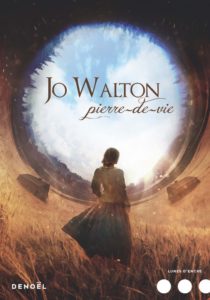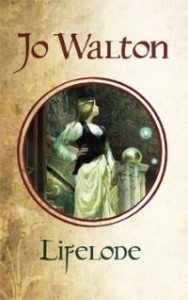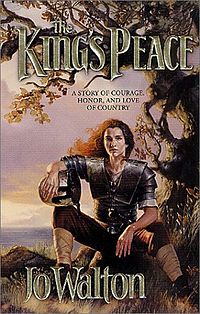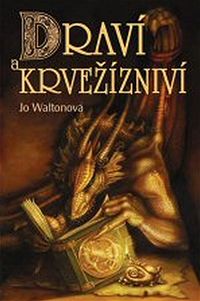Lifelode was published by NESFA Press in 2009, and was published as an ebook in 2020. It was my eighth published novel. It won the Mythopoeic Award for “fantasy in the spirit of the Inklings” in 2010, and was shortlisted for the Tiptree Award for genre work that does interesting things with gender.
Lifelode is a domestic fantasy, set in a very strange world. I wanted to write something that was small-focused fantasy, that had families and women’s lives as central, in a high-magic world. It turned out to be really hard to do — who knew? Lifelode was definitely the most difficult book I have ever written.
Tansy Rayner Roberts had a very perceptive review of it that I’m going to quote instead of trying to describe it myself:
At its heart, Lifelode is the story of a comfortable manor house family. The four adults of the household are happily polygamous, each fulfilling their ‘lifelode’ or life’s purpose: Ferrand is the lord of the manor, his sweetmate Taveth runs the household, his wife Chayra makes ceramics, and Taveth’s husband Ranal works the farm. Their children are a joyful bunch, running around in the sunshine days of the harvest and wondering what their own lifelodes will be.
Their lives changed with the arrival of two visitors to Applekirk: Jankin the scholar and Hanethe, Ferrand’s great grandmother and the former lord of the manor, who has been living for many generations in the East, a place where the gods walk and yeya (magic) is so powerful that those who wield it are not quite human.
While Jankin’s casual flirtations stirs the women of the household, creating disharmony in the family, it is Hanethe’s return that causes the greater disruption. She is fleeing a goddess whom she wronged, who may well bring her vengeance down upon the family who harbours her. Slowly, step by step, the comfortable life of Applekirk is to be unravelled and nothing will ever be the same again…
This is an intense read – I recommend having at least a good hour or two to devote to it in the first instance, to get the hang of how the book works. Trying to pick it up and put it down again in my usual habits worked against me, and it wasn’t until I was able to sit for longer periods and immerse myself that it really began to unfold.
Lifelode is deceptive – it seems to be a gentle family drama, reminiscent of Galsworthy or Austen, with a rigorous fantasy background dripfed to the reader through their daily lives. Walton’s actual influences are detailed at the end, in a mini-interview in the form of a “frequently asked questions” list that is definitely worth a read – though I didn’t feel that many of those explanations were necessary. The way the world works, and the differences between the part of the world we see and those we only hear about were perfectly clear in the narrative, if revealed only a small piece at a time.
 I wrote Lifelode over about a million years, in various stages. I rewrote it entirely part way through when I finally figured out the mode properly. I started it on 12th March 2003 and finished it on November 4th 2005. In between I stopped and wrote several other starts, all of Farthing and half of Ha’Penny. And despite my subjective perception that it took forever to write and way longer than anything else ever, I have records and it took me 42 writing days, spread out over those two and a half years.
I wrote Lifelode over about a million years, in various stages. I rewrote it entirely part way through when I finally figured out the mode properly. I started it on 12th March 2003 and finished it on November 4th 2005. In between I stopped and wrote several other starts, all of Farthing and half of Ha’Penny. And despite my subjective perception that it took forever to write and way longer than anything else ever, I have records and it took me 42 writing days, spread out over those two and a half years.
Nancy Jane Moore on Book View Cafe.
Really excellent discussion of how time works and why that’s interesting at Library Hungry
There’s a FAQ in the book.
It was translated into French by Florence Dolisi and published in 2019 with the title Pierre-de-vie.




